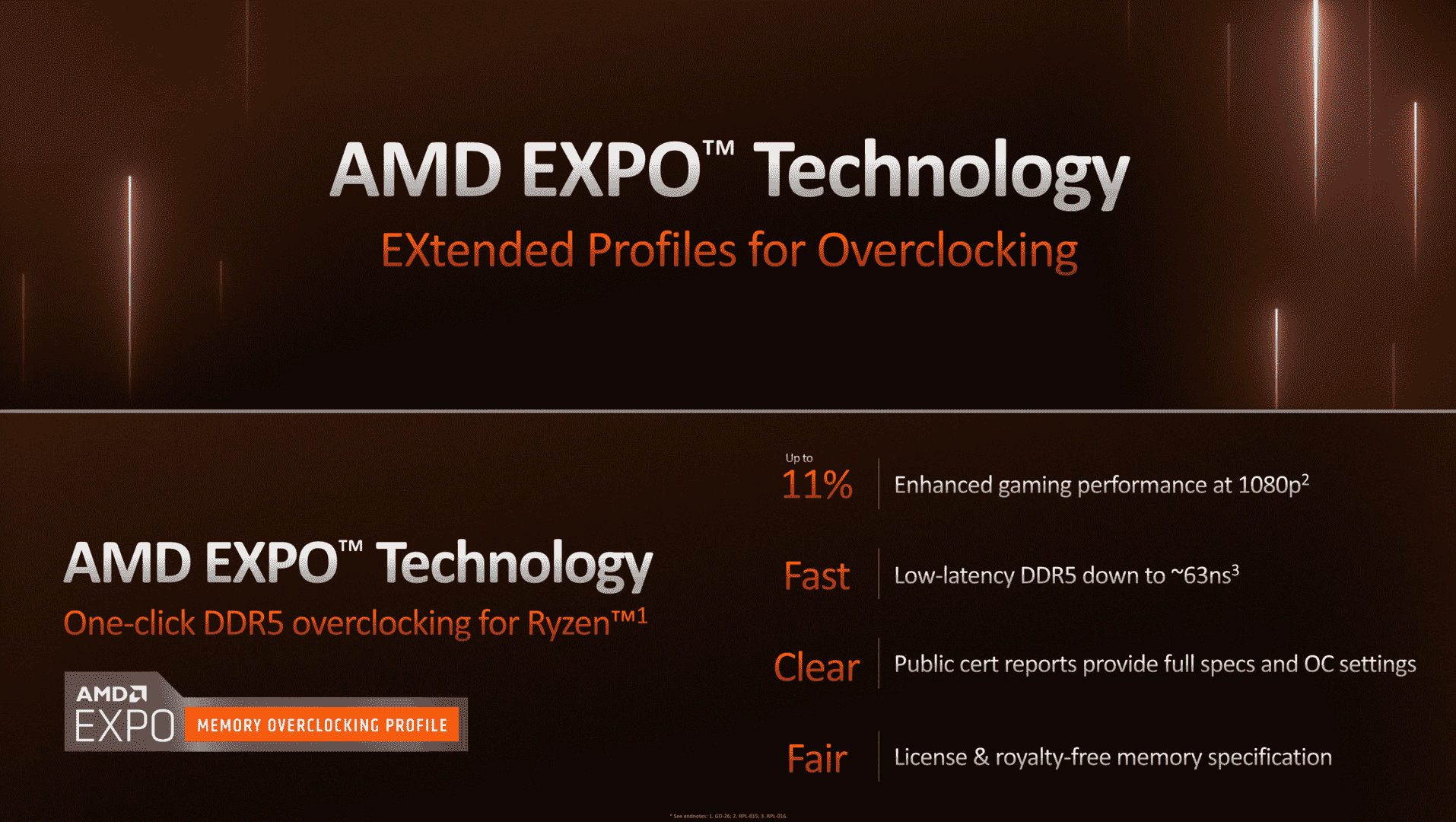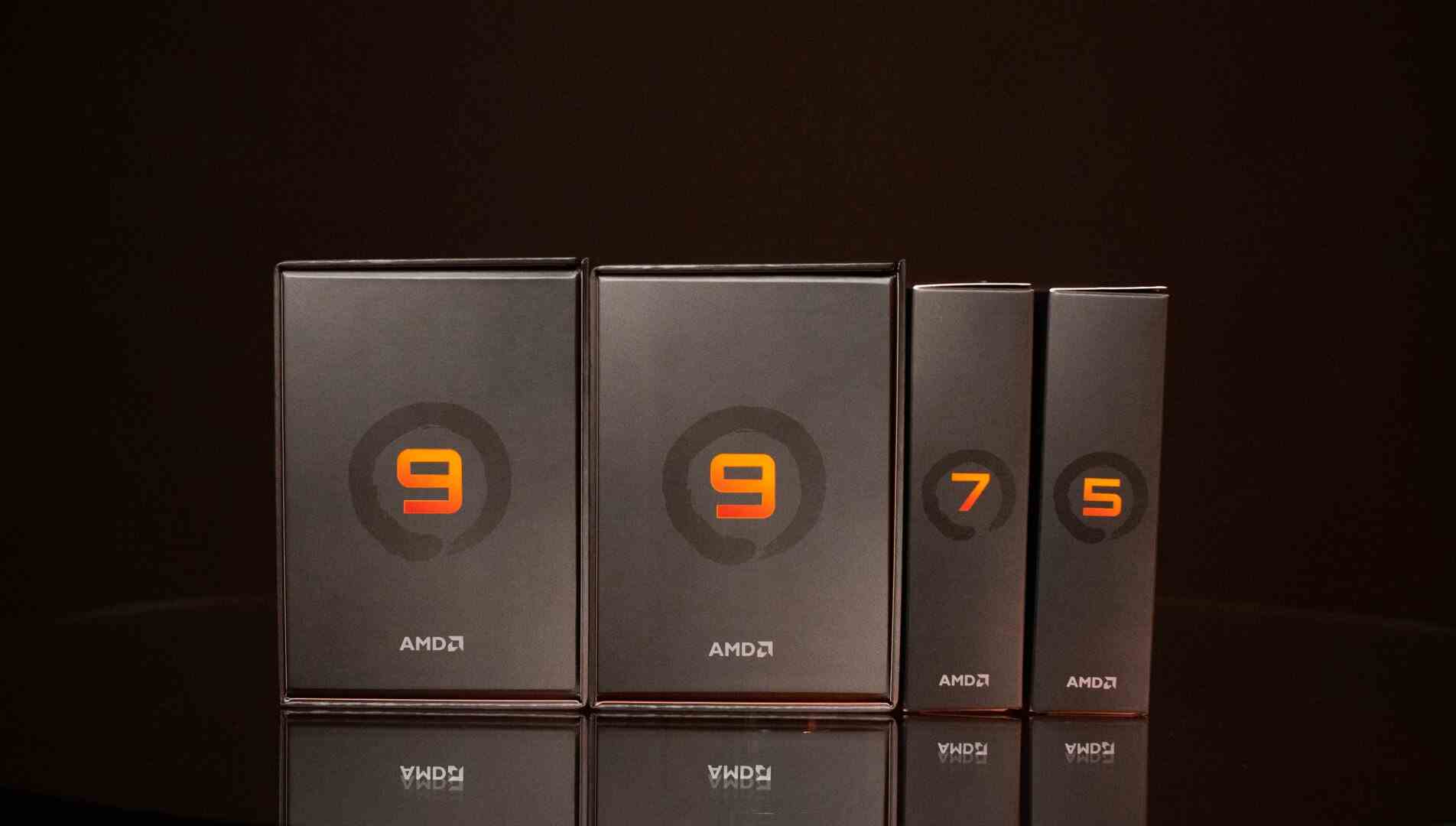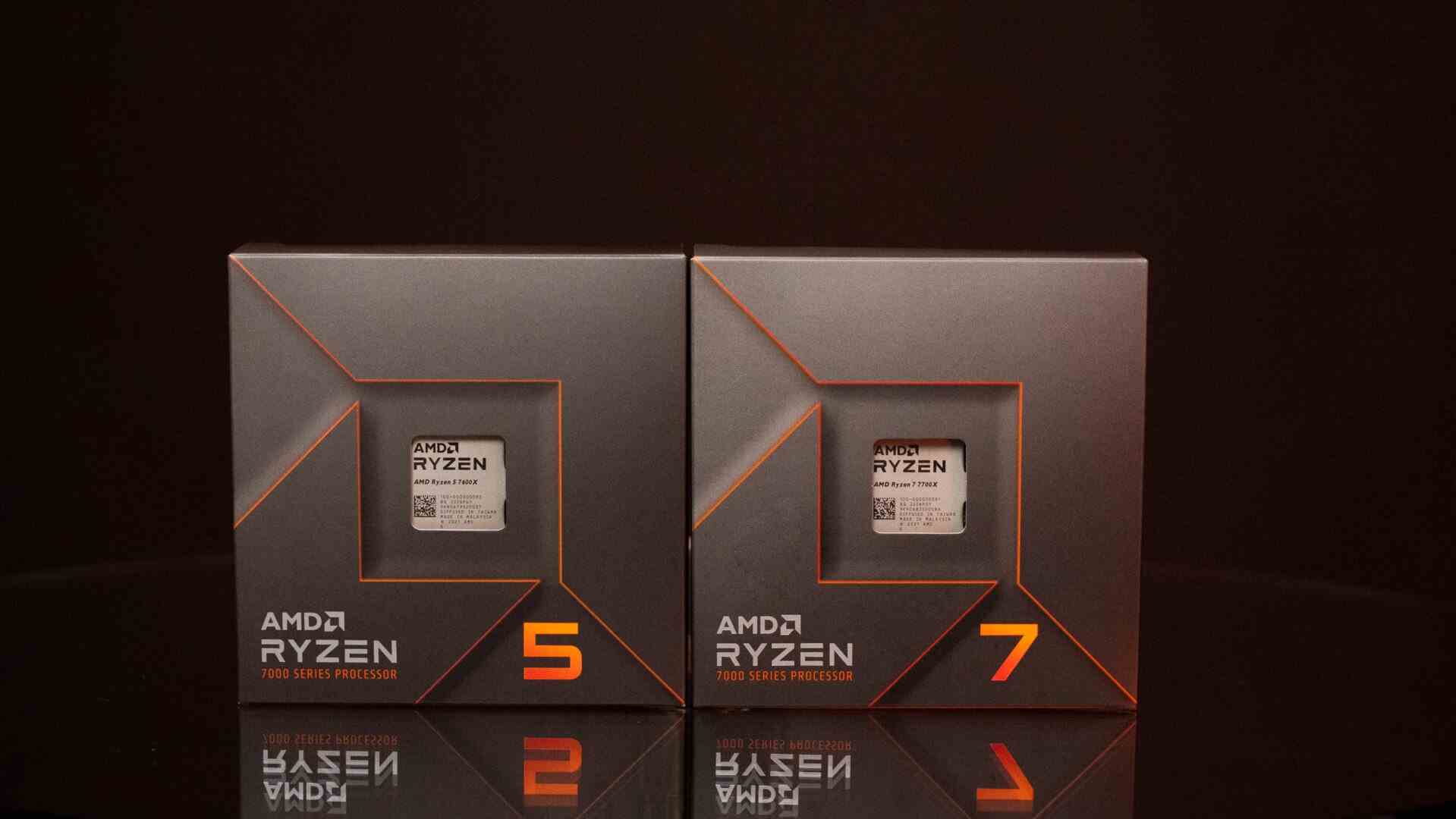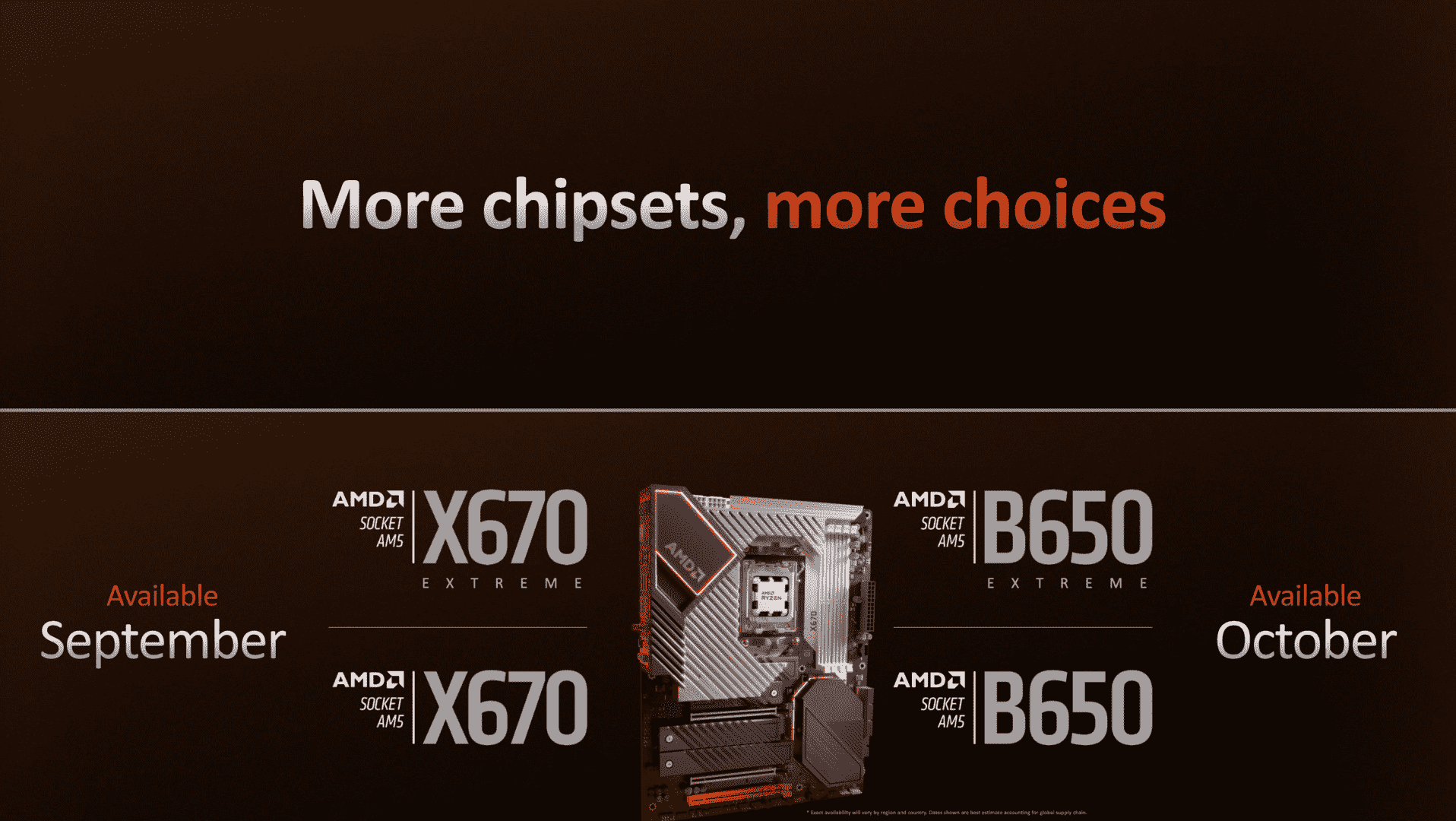AMD has stacked deep and surprised at the presentation: The new CPUs are not only faster than expected, but also cheaper in some cases. Even a small Ryzen 5 7600X can beat an Intel Core i9-12900K, at the top the flagship Ryzen 9 7950X even drops 100 US dollars in price.
In the remote Hyatt Regency Lost Pines Resort and Spa Almost half an hour southeast of Austin in Texas, AMD lifted the curtain on the new Ryzen 7000 processors on Monday afternoon. AMD’s CEO Lisa Su was flanked by chief technology officer CTO Mark Papermaster and desktop boss David McAfee. Everyone had a lot to say and show. For once again they had fallen low, even in the official announcements. And so they were able to present the new generation in an extremely good mood today, which should be available in stores in four weeks.
It has become a final 13 percent more IPC
The final IPC increase of Zen 4 compared to Zen 3 is not eight or up to ten percent, but around 13 percent. This is once again a clear gain, which, especially in the end, coupled with a high clock rate, enables a faster product. According to its own statements, AMD has found the last percentage in the finalization and optimization of the products – which, however, seems slightly implausible when the manufacturer was initially off by up to 50 percent.
Instead, AMD is likely to have kept expectations low on purpose, as a look at the details shows. Because the Cinebench result shown at the time was exactly where Ryzen 7000 was classified with the information at the time, with an increase of 9 percent. However, many other things – especially games – sometimes scale much better, so that a higher average result is now evident. The 22 tests are based on two eight-core processors, each with a clock speed of 4 GHz: a Ryzen 7 5800X with DDR4-3600 and a Ryzen 7 7700X with DDR5-6000 and EXPO (!) – more on that later.
AMD got 60 percent of the performance gain in the area of the front end and the revised branch prediction, the load/store area completes the whole thing and, above all, in the end the implementation. The other areas, which initially look clearer on paper than they actually are, make only small gains; such as the doubled L2 cache from 0.5 to 1 MB per core. AMD doesn’t touch the L3 cache, it stays with the well-known 32 MB for a CCD.
AVX-512, as a well-known extension that has now been confirmed in a benchmark for the first time, can contribute major performance gains depending on the area of application. In classic FP32 applications it is up to 30 percent, with adapted and optimized INT8 applications even a factor of 2.5 can be achieved as an increase in performance.
New clock records thanks to the optimized 5 nm process
However, Zen 4 does not live from architecture alone – it is the overall package that counts. And that’s where the clock, which has been increased by up to 800 MHz and made possible by an optimized 5 nm design by TSMC, stands out. This now also allows for higher power consumption, so that the TDP of 170 watts also has its share in the flagship. As is well known, this is of secondary importance in single-core performance, but in multi-core scenarios, AMD once again circles around the competition.
However, the real eye-catcher is not the product at the top with a TDP of 105 or now 170 watts – although it is also brought about by the adjustments – but the class with lower consumption. In the 65 watt group, the Zen 4 as a product can provide up to 74 percent more power than the Zen 3 with the same consumption, which is an incredibly good result – the notebook CPUs aka Ryzen 6000 already indicated this between the lines. Some of the technologies and (power saving) features from the notebook have found their way into the Ryzen 7000. There are more details about the official launch and test of the product, because these are still under NDA.

Despite the increased L2 cache, the adapted 5 nm production for the HPC segment results in a bottom line 18 percent smaller area of a Zen 4 core compared to Zen 3. AMD does not shy away from the comparison with the competition, a performance core the Alder Lake CPU aka Golden Cove is almost twice as big.

Four models to start on September 27th
AMD will initially offer four models, clearly structured. The price structure was adjusted. First and foremost, the cheaper flagship is striking, but eight cores are also cheaper at the start of Zen 4 than at the start of Zen 3. However, this only applies to the US dollar price: In view of the current weak level of the euro, the price of everyone It is unlikely that they will be transferred one-to-one into the local currency. Instead, a significantly higher price can be assumed.
All new CPUs will have a small integrated graphics unit, but more details on this will only be available at launch. All have to be operated with DDR5, only this memory standard is available on the new platform around the socket AM5 (LGA 1718) with its eponymous 1718 contacts.
The new AM5 platform with season launch
The cornerstones of the new AM5 platform have been known for some time, now there are the launch details. Only the two X670 chips will appear at the start, followed by the B650 solutions from October, including the B650E as a newly confirmed solution. Another pillar of the new platform will follow in November: PCIe 5.0 SSDs. This point comes as a surprise, but also explains why this topic was recently cooked on a rather low flame. Here the entire ecosystem does not seem to be that far yet.
For normal users, McAfee explained when asked that the said chipsets do not differ in normal everyday use. Only when extreme overclocking is used can an X chipset show its strengths. However, the mainboard manufacturers should also have a say here – what they want to enable with their boards is up to them. Theoretically, however, a B chipset will suffice for almost every user in the future.

AMD EXPO is the expected new technology around DDR5 memory. It’s basically AMD’s own XMP, because an AMD processor clearly benefits from fast memory. As an example, AMD cites an increase in gaming performance of up to 11 percent – exactly these modules were used when determining the IPC. In the near future, this is likely to become a multifaceted numbers game and constantly produce different results.
15 manufacturers will be offering EXPO modules at the start, with a maximum clock rate of 6,400 MT/s so far. But the mainboards don’t have to be equipped with EXPO modules, although AMD likes to see that. Because XMP is still additionally supported; almost all modules are available on the market and can be operated with the Ryzen 7000.
It should start at 125 US dollars, for a cheap B650 board, of course. Nevertheless, buyers should keep their eyes open, for example to see whether the respective board also supports up to 230 watts and whether the manufacturer provides good support, so that the operation advertised today is actually guaranteed up to the year “2025+”.
Manufacturer benchmarks see AMD clearly ahead
Benchmarks of one’s own product by the manufacturer are always a double-edged sword. Of course, these show the advantages of the new product. Today, too, there is a note that this is of course not the complete picture. That will only show independent tests, also here on ComputerBase, in September.
AMD is visibly proud of the performance, which comes to the fore thanks to the high clock and the increased IPC. According to the manufacturer, each of the four Ryzen 7000 processors can now beat an Intel Core i9-12900K in Geekbench’s single-core test. Nevertheless, this slide from the marketing is a rather bad example to show the performance of the processor in gaming.

AMD has focused on the smallest new Ryzen CPU in addition to the flagship, because it should also be convincing in gaming. The manufacturer showed this on site with the title F1 2022, which also directly represents the best result from a small list. The bottom line is that the overall performance should be enough to beat a Core i9-12900K. Both test systems ran with DDR5-6000 memory.

In applications in particular, the new Ryzen 9 7950X circles around the Intel Core i9-12900K. But not only the comparison with the competitor is sought; the R9 7950X also clearly beats the predecessor R9 5950X both in applications and in games.
The trappings and little things from the event
For the invited press there was a short question and answer session on site in Austin after the recording. Many of the statements are already incorporated into the continuous text. However, details have also come to light, such as the availability of Zen 4. AMD dispelled these possible worries, they had secured much higher quantities of wafers and did not see any problems there; a possible substrate shortage is also counteracted. The only small hurdle AMD still faces is worldwide shipping.
Zen 3 will also remain on the market for a long time, Zen 4 is initially aimed at the expensive enthusiast market. Later, the portfolio will also be rounded down and correspondingly cheaper; from the beginning of 2023 this should gradually happen. The question of cost plays the biggest role here, because production in 5 nm is of course more expensive than in 7 nm – it is to be hoped that prices will fall in the medium term. Ultimately, the mainboards should also be available at prices starting at 125 US dollars – only expensive processors for enthusiasts do not fit into the picture.
Many other details and information are still under NDA and may only be published for the test or the market launch on September 27th. These will then find their way into the corresponding tests and reports – the editors can guarantee that.
ComputerBase has received information about the article from AMD under the NDA. The condition was the participation in an event in Austin, Texas. There the presentation in the afternoon (local time) was recorded and questions from journalists were answered; taking your own pictures was not allowed. The travel costs were borne entirely by AMD, and there were no other conditions for the release.
Was this article interesting, helpful or both? The editors are happy about any support from ComputerBase Pro and disabled ad blockers. More about ads on ComputerBase.











